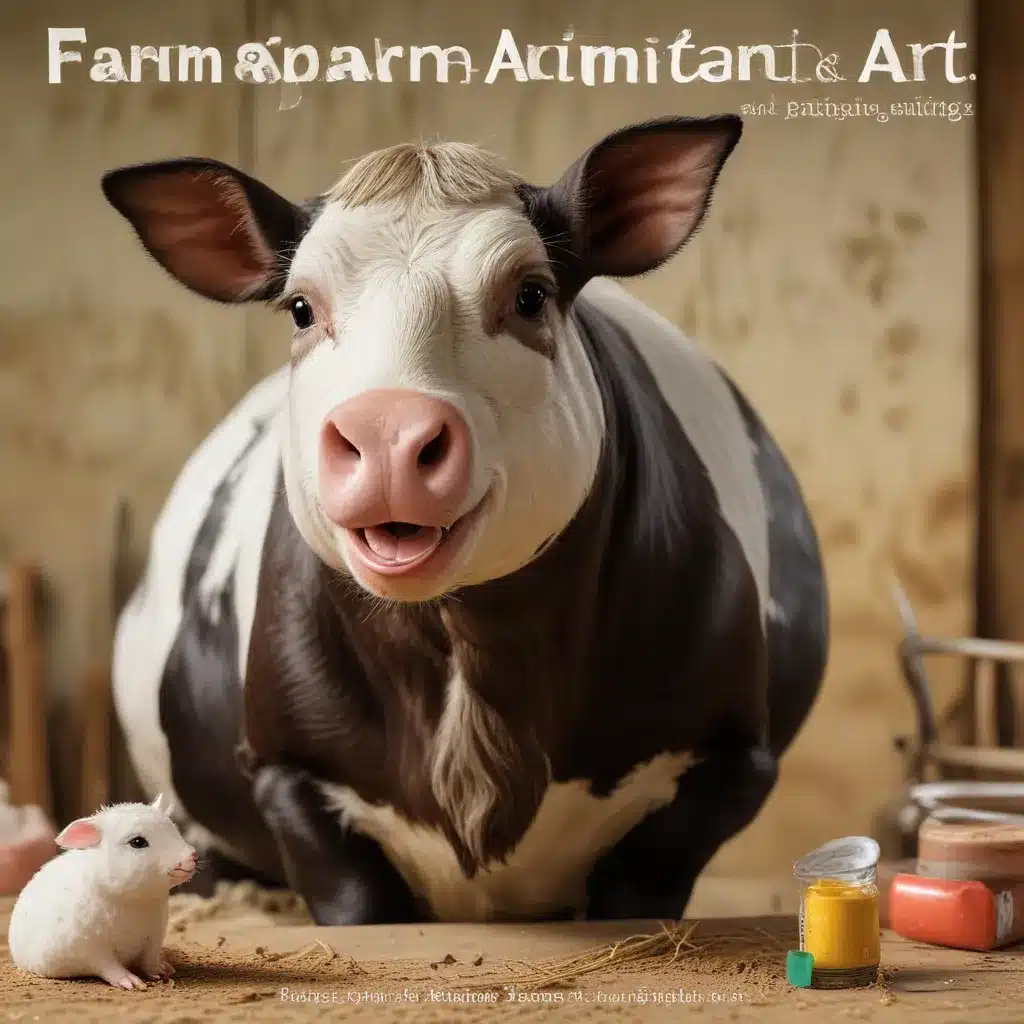
Unleash your inner artist and explore the captivating world of farm animal art! Whether you’re a seasoned painter, a budding sculptor, or simply someone who appreciates the beauty of our four-legged and feathered friends, this guide will inspire you to channel your creativity and bring the charm of the farmstead to life.
Painting Techniques
Acrylic Painting: Acrylics offer a versatile medium for capturing the vibrant hues and textures of farm animals. From the sleek coats of cows to the iridescent feathers of chickens, the quick-drying nature of acrylics allows you to layer colors and experiment with bold brushstrokes to achieve a range of artistic styles, from realism to impressionism.
Oil Painting: The rich, creamy consistency of oil paints lends itself beautifully to the rendering of farm animal subjects. Embrace the depth and luminosity of oils to depict the soulful eyes of a sheep or the majestic presence of a draft horse. Take your time to capture the nuances of light and shadow that bring these creatures to life on the canvas.
Watercolor Painting: The fluid, transparent nature of watercolors can beautifully capture the essence of farm animals. Experiment with wet-on-wet techniques to convey the softness of a lamb’s wool or the delicate patterns of a rooster’s comb. The spontaneity of watercolor can also lend itself to more expressive, abstract interpretations of your animal subjects.
Drawing Methods
Charcoal Drawing: Harness the bold, dramatic qualities of charcoal to sketch farm animals in a range of poses and settings. Capture the powerful presence of a draft horse or the playful energy of a piglet with this versatile medium, playing with light and shadow to create depth and dimension.
Pencil Sketching: Embrace the simplicity and precision of pencils to render detailed studies of your farm animal muses. From the intricate textures of a goat’s beard to the delicate features of a baby chick, pencil sketching allows you to focus on the nuances of each subject and bring them to life on the page.
Ink Illustration: Unleash your inner storyteller by exploring the bold, expressive qualities of ink. Create dynamic, graphic representations of farm animals, from the whimsical silhouettes of chickens to the dramatic, flowing lines of horses in motion.
Sculptural Approaches
Clay Modeling: Capture the three-dimensional form of your farm animal subjects through the art of clay modeling. Sculpt the distinctive features of a cow’s muzzle, the curving horns of a goat, or the delicate wings of a chicken using a range of sculpting tools and techniques. Once fired, these clay creations can be painted or left in their natural, earthy state.
Wood Carving: Embrace the rustic charm of the farmstead by carving your animal muses from wood. Whether you choose to depict a majestic horse or a playful piglet, the grain and texture of the wood can lend a unique, handcrafted quality to your sculptures.
Bronze Casting: For a truly impressive, long-lasting farm animal art piece, consider the timeless medium of bronze casting. This intricate process allows you to immortalize the form and essence of your animal subjects in a durable, museum-quality sculpture that can be displayed with pride.
Artistic Styles
Realist Depictions: Strive for photorealistic renderings of your farm animal subjects, capturing every intricate detail of their form, texture, and expression. This approach can showcase the natural beauty and dignity of these creatures, inviting the viewer to truly connect with their subject.
Impressionist Interpretations: Embrace the expressive, gestural qualities of your chosen medium to convey the essence of your farm animal subjects. Experiment with bold brushstrokes, vibrant colors, and a focus on capturing the emotional impact of your subjects rather than strict realism.
Expressionist Compositions: Explore the more abstract, emotive side of farm animal art by creating compositions that convey the raw power, energy, or whimsical nature of your subjects. Distort proportions, exaggerate features, or play with abstract shapes and patterns to evoke a deeper, more visceral response from the viewer.
Thematic Inspiration
Farm Animal Subjects: Whether you’re drawn to the majestic presence of livestock, the endearing charm of poultry, or the gentle grace of equine creatures, there is a wealth of inspiration to be found in the diverse world of farm animals. Observe their unique personalities, behaviors, and physical characteristics to inform your artistic interpretations.
Environmental Contexts: Situate your farm animal subjects within their natural habitats, from lush pastures and cozy barns to bustling farmyards and serene ponds. Incorporating these environmental elements can add depth, narrative, and a sense of place to your artwork.
Artistic Mediums
Two-Dimensional Media: Explore the versatility of traditional canvases, paper, and digital platforms to bring your farm animal art to life. Experiment with the unique qualities of acrylics, oils, watercolors, charcoals, pencils, and inks to capture the essence of your subjects.
Three-Dimensional Forms: Embrace the tactile, sculptural nature of farm animal art by working in clay, wood, or metal. Craft detailed, three-dimensional representations that invite the viewer to engage with your creations on a deeper, more immersive level.
Whether you’re a seasoned artist or a budding creative, the world of farm animal art offers endless opportunities for exploration, experimentation, and personal expression. Embrace the unique charm and character of these captivating creatures, and let your imagination soar as you bring them to life through your artistic vision. To learn more about Crooked Pines Farm and our various artistic workshops and events, please visit our website at www.crookedpinesfarm.com.


